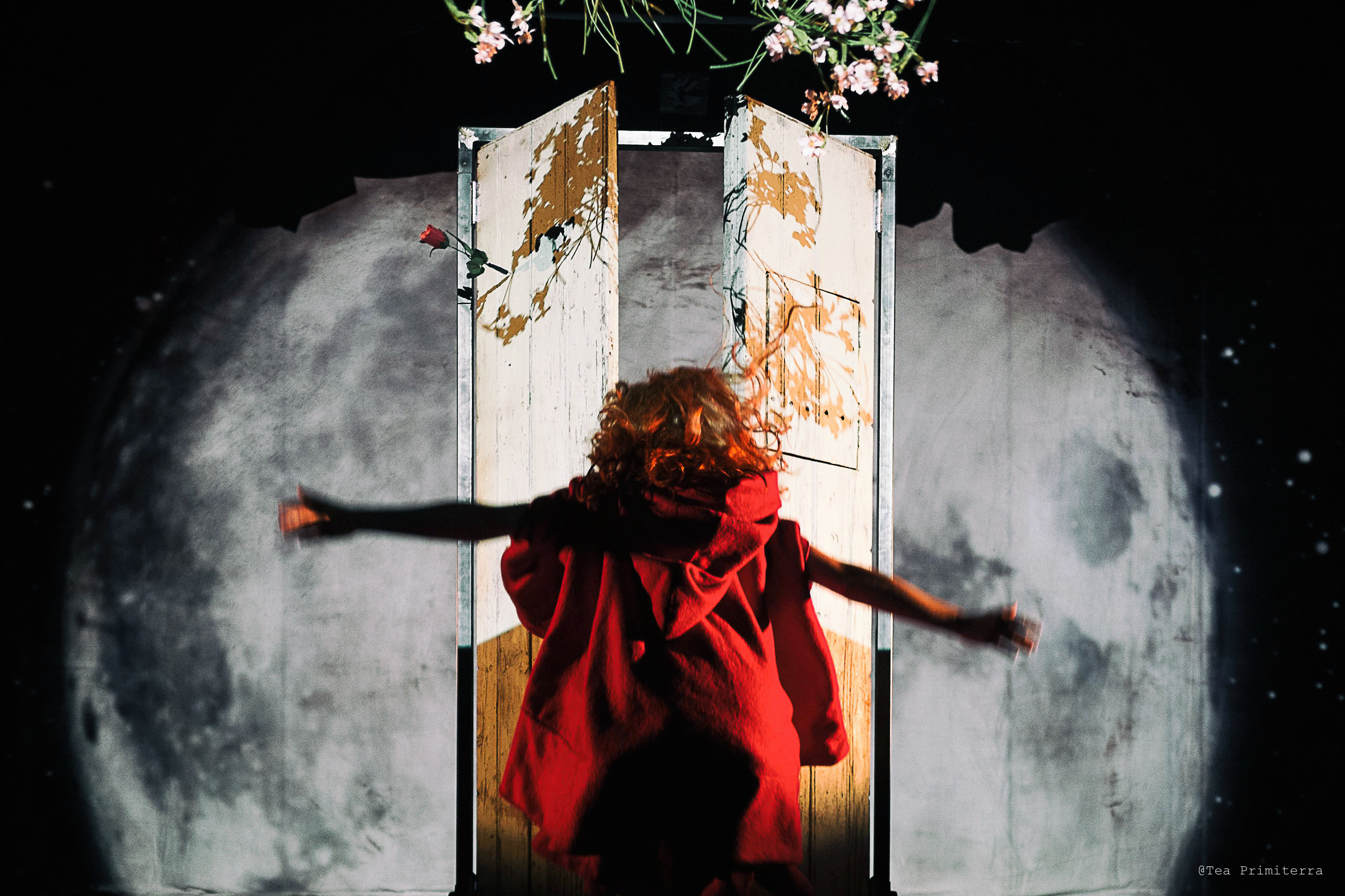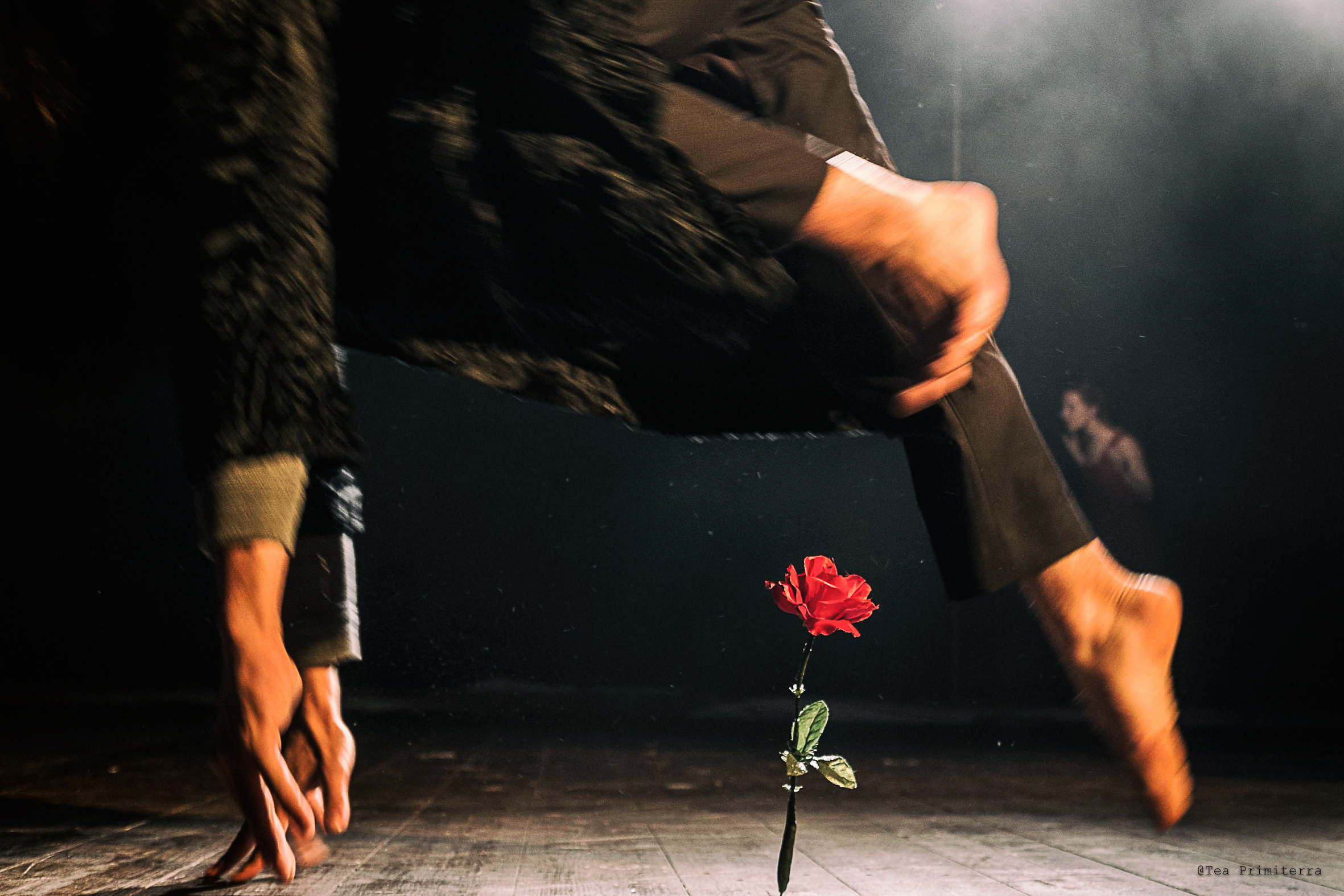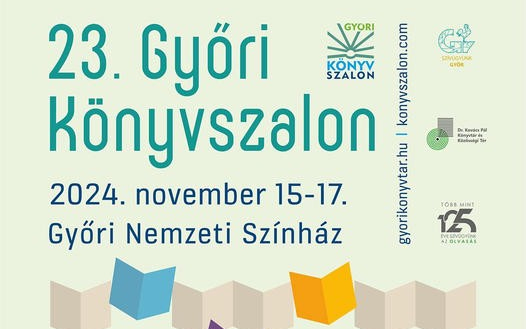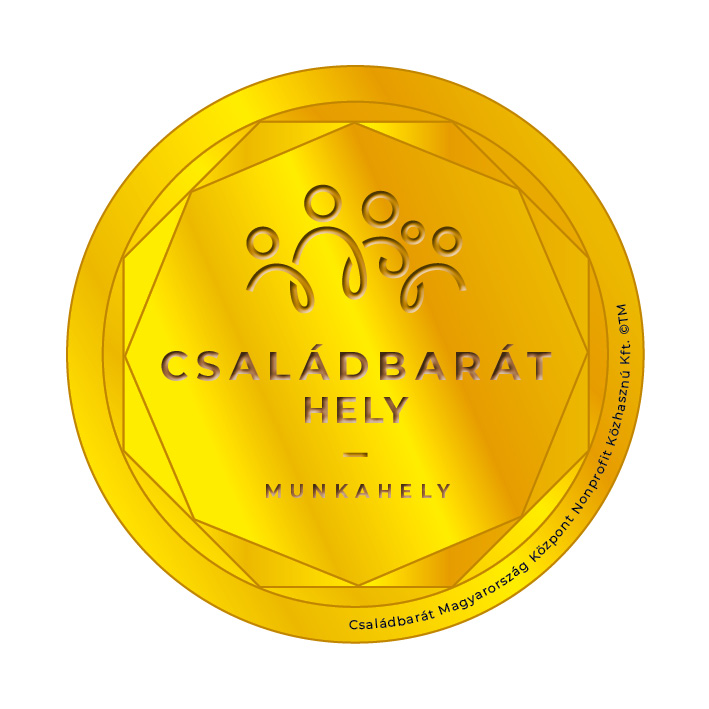Piroska és a farkas története egy összművészeti alkotásban
Compagnia La Luna nel Letto - Cappuccetto Rosso / Piroska és a farkas
Michelangelo Campanale, az előadás rendezője
Honnan jött az ötlet az előadáshoz, mi volt a legfőbb inspiráció?
A piroska és a farkas című produkció azért született, mert szükségünk volt egy fajta párbeszédre a gyerekekkel a félelemről, a gonoszról, és a gonosztól való félelemről. A mesében a farkas szimbolizálja a félelmet. A produkciónk lehetőséget ad a közönségnek, hogy belépjen a farkas odújába, megismerje a titkait, a rémálmait, hogy közelebbről láthassa, nagyon közelről, de mégis biztonságos térben. A testbeszéd segítségével szerettem volna megeleveníteni ezt a történetet, a társulat táncosai “EleinaD”, mozdulatait megörökítve, a lenyűgöző Francisco Goya által inspirálódva. Szóval az előadásban vizuális összművészeti elemek jellenek meg.
A célközönség ismerete befolyásolja-e a művészi megnyilvánulás kifejezőeszköz rendszerét, mennyiben alkot másként a művész, ha tudja, hogy gyerekeknek alkot?
Az a fajta színház, amit én csinálok minden esetben egy párbeszéd a generációk között. Azonosítja a problémákat, és olyan művészeti nyelvezettel dolgozik, ami érdekes és érthető minden korosztály számára. A generációk közötti különbséget csupán a tapasztalatok jelentik. A kihívás az, hogyan szólítsuk meg mindegyiket. Ez mindaddig lehetséges, amíg a színház gondolkodásra késztet, ahelyett, hogy magyarázkodna. Úgy mesél, hogy közben nem erőltet rá senkire semmilyen tanulságot. Kérdéseket tesz fel, de nem ad egyértelmű válaszokat. Az egész egy játék, és ezt a gyerekek rögtön értik.
Miként zajlik a nézői reakciók vizsgálata, az új generáció szokásai; online jelenlétük miképpen befolyásolja a színház műfaját?
A társulatunk már hosszú évek óta gyerekekkel dolgozik, jól látjuk a kulturális kontextus változását, amiben felnőnek; mindig is értékként tekintettünk a gyermekkorra, ugyanakkor mindig is igyekeztünk megérteni és nem átokként kezelni, az elmúlt évek rendkívül gyors változásait. A színház továbbra is teret tud biztosítani a szabad játéknak, a végtelen kreativitásnak és képzelőerőnek. Ez pedig vonzza a fiatal generációkat, a digitális világ egyre csak növekvő térnyerése ellenére. Az élőszereplős előadás ezt az örökséget viszi tovább, különösen akkor, ha a színházlátogatás egy izgalmas tapasztalattá válik.
Hogyan változik a gyermek-és ifjúsági előadások alapanyaga? Mennyire van szó szimpla adaptációról, és mennyire vannak hatással az alkotói folyamatra az adott korosztály aktuális problémái?
Nincs olyan művészeti ág, vagy alkotói folyamat, ami el tudja érni a közönséget úgy, hogy nincs párhuzamban azzal a kultúrával, amiben születik. Annak egyszerűen nincs létjogosultsága. Meggyőződésem, hogy minden művészeti cselekmény egyfajta párbeszéd a művész belső világa, kultúrája, és az őt körülvevő külvilág között. Úgy gondolom, hogy ez a dialógus táplálja a tehetséget, és mindez a fiataloknak szóló színház számára is elengedhetetlen. A jövő felé kell fordulni.
Hogyan alakítanak ki kapcsolatot az adott korosztállyal, mik lehetnek a fő kapcsolódási pontok?
A színházunk egész évben tele van családokkal és különböző korú gyerekekkel. Közösségi színház vagyunk. Közeli kapcsolatban vagyok velük minden nap. Ugyanakkor nagyon nyitott vagyok más, gyermekeknek és fiataloknak szóló műfajokra: mozi, animációk, képregények, de a tévéműsorokra és sorozatokra is! Ezek a legfőbb kapcsolódási pontok számomra.

Michelangelo Campanale, director
Where is the idea of the show/play coming from? What was your main source of inspiration?
The production “Little Red Riding Hood” was born out of the necessity of a dialogue with children about the fear, the evil and the fear of the evil. The Wolf from the “Little Red Riding Hood” is the emblem of the evil. Our production gives the audience an opportunity to enter the wolf’s den, to get to know his secrets, his nightmares, to see him close, really close, still staying in the safe space of the stalls. I wanted to tell this story using the body language: the dancers of the company “EleinaD” have been captured in movement, inspired by the magnificent art noir of Francisco Goya; put into a scenario that quates Turner. So, we are definetely talking by means of visual arts.
Does the fact, that you know exactly who your target audience is, affect the way you express your art? How much difference does it make, to create something especially for children?
My way of doing theatre is always a dialogue between generations, It adresses the issues and uses the artistic languages that are interesting and understandable to specatators of all ages. What different generations have in common are the experiences. The challenge is to talk to everyone. This is possible as long as my way of making theatre evokes instead of describing. It narrates but it doesn’t impose a moral. It poses questions but it doesn’t give answers. It is a game and children get it right away.
How do you examine feedback from the audience? How do the habits of the new generation, such as massive online presence affect the existence of the theaters?
My company La luna nel letto is working for children for years, we have seen the cultural context they grow in change; we have always defended childhood as a value, and, at the same time, we tried to understand and not to demonize the rapid changes of the past few years. The theatre keeps ensuring the space for playing freely, for endless creativity and immagination. This attracts also young generations, despite of the increasing influence of digitality. The live show stands for this heritage, especially when going to the theatre turns into an exciting experience.
How do the fundamentals of a play, created for children (and the youth) change? How much of the creation process is based on simple adaptation, and how much do the everyday lives, and the current problems of the youth affect it?
No piece of art, no artistic creation can ever reach the audience if it is not able to dialogue with the culture it is born in. It just doesn’t have a reason to be. I am convinced that an artistic act is a dialogue between the internal world and culture of the artist and the outside world around him or her. I believe that the talent is nurished by this very dialogue. It is absolutely essential also for the theatre for young audiences. It has to look into the future.
How do you connect to children and young individuals? What are your main ways of connection?
My company’s theatre is full of families and children of all ages all the year round. We are the community theatre. I am in a close contact with them every day. At the same time I am very attentive to other forms of art for children and youth: cinema, animation, comics, but also TV and TV serias! These are my sourses.

Olvassa el ezt is!
-
Megvan a könyvszalon dátuma!
A Győri Könyvszalon ismét szélesre tárja kapuit november 15-17. között, immár 23. alkalommal. A legnagyobb vidéki könyvfesztiválon kitűnően érezhetik magukat azok, akik a klasszikusokon túl érdeklődnek a legfrissebb irodalom iránt,…2024. szeptember 03.










